You’ve been bitten. The travel bug has taken root in your soul. You long for idyllic temples floating in oceans of jungle, beaches with just one set of foot prints, and the rush of stepping off of a plane and being surrounded by a sea of strange. You have no shortage of dreams, it’s the dollar signs that hover over them that give you nightmares.
So you begin to research budget travel and find ways to cut costs, but along with costs you cut a big piece of your soul off as well. You can go ‘round the world with boots and a backpack, thousands do, but the limitations of public transportation and the difficulty of getting beyond the backpacker ghettos isn’t a small one. Not to mention the daunting task of carrying your own gear on your back clear around the globe. Some of the realities of budget travel are a bit demoralizing.
There is a solution, and those who avail themselves of it often become passionate cheerleaders who never go back. Cycle touring. Before you roll your eyes, give it a second. Here are five benefits that might make you take a test ride around the block.
You Don’t Carry Your Stuff
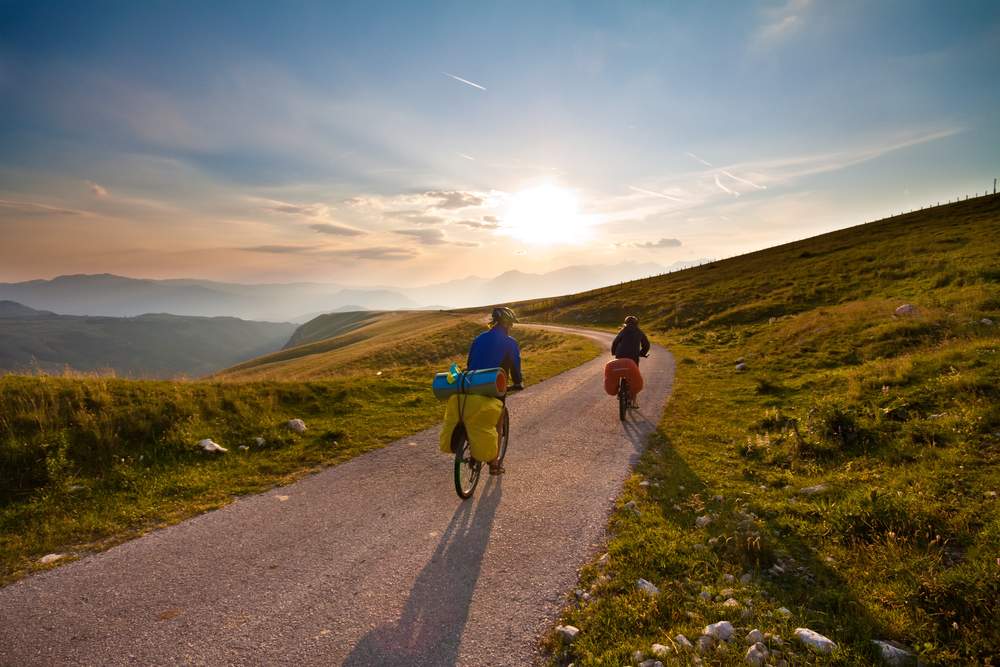
When we began looking at cycling as an option for our year long trip through Europe and North Africa, the first benefit that occurred to us was that we wouldn’t have to “carry” our stuff the whole time. This was a huge deal to us because we had four little kids at the time, and it wasn’t just our stuff we’d be carrying, it was theirs, too. Sure, pedaling a fully loaded bike up a hill is work, but gravity and inertia work with you most of the time. Every time we’d enjoy a long slow downhill glide, the man would shout back, “Gravity, Baby! So much better than a backpack!”
“Gravity, Baby! So much better than a backpack!”
Not only do you not have to carry your stuff when you’re in motion, you don’t have to carry your stuff while you’re touring either. Gear can be locked to bikes and bikes locked to trees and explorations made unencumbered. To anyone who’s carried a heavy backpack long distances, this is not a small benefit. There are almost always places to lock bikes outside of cultural centers, and where there’s not, it’s a simple matter to pay a local kid to watch your junk.
*Tip* When paying a local kid to watch your stuff, pay a small amount up front and promise a bigger payment when you get back and your stuff is all still there.
Safety Tips
Our favorite panniers are made by Ortlieb and are completely waterproof, but there is much debate in the cycling community about bags and adherents to one brand tend to be fiercely loyal. Find the best match for you. The wires that lock the panniers to the bike are a plus for avoiding quick grab thefts, but any real thief will be carrying wire cutters and won’t be deterred. The real perk of the Ortlieb bags, for us, was the addition of a backpack attachment, allowing us to pull off a pannier, clip it onto the attachment and carry a day-sized pack away from the bikes. The bag with the computers & expensive techie stuff was always on our backs.
Want to avoid petty theft while you’re away from the bike?
Get the backpack attachment and carry the “good stuff” with you.
Pack inside the panniers in a series of zip top bags and intersperse the things that matter inside socks and underwear.
Keep the extra money in a secret pocket sewn into the dirty laundry bag.
After five straight years of full time travel, the only thing we’ve ever had stolen were the mirrors off of our van in New Orleans over Mardi Gras.
Learn How to Travel Lightly and read the Ultimate Guide to Packing for a RTW Trip
Lodging Options Expand
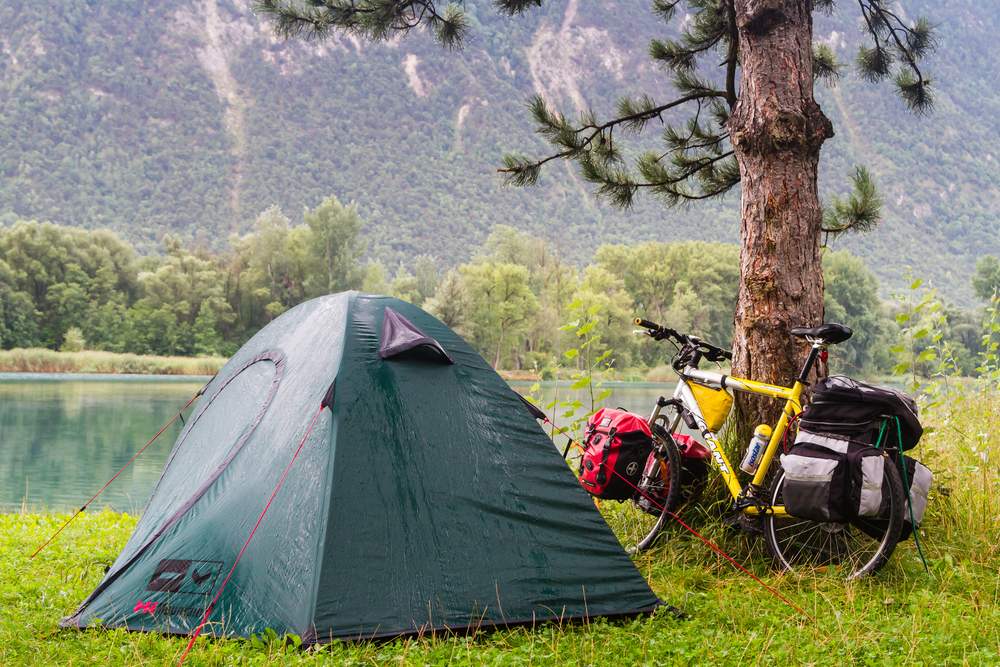
In addition to hostels, budget hotels, and couchsurfing, all of which are still open to you, there is the added option of
warmshowers.org. This site facilitates a home-stay network specifically for cyclists. We stayed a full seven days in London and a week and a half in Rome, two of the most expensive European cities, with all the kids, for free. That’s right. Zip. Nada. Do the math on two hotel rooms for that amount of time in those cities. Go ahead, I’ll give you a minute. For a budget hotel, under $100 USD a night we’d have been well over the $1000 USD mark. For each city.
Not only did we save a ton of money, we made lifelong friends in the process, and there’s just no price tag that can be put on that.
The option to carry a tent in your panniers eliminates any housing crisis. People are amazingly happy to have travelers camp in their fields or front yards. Campgrounds every few nights provide showers and laundry, and you meet some really fascinating folks on the road. Every night you can camp for free, or next to it, leaving money in your wallet for the next cultural event or pub crawl.
Read Camping in Europe – A First Timer’s Guide and check out these 5 Tips for Camping With Kids
Get Off the Beaten Path
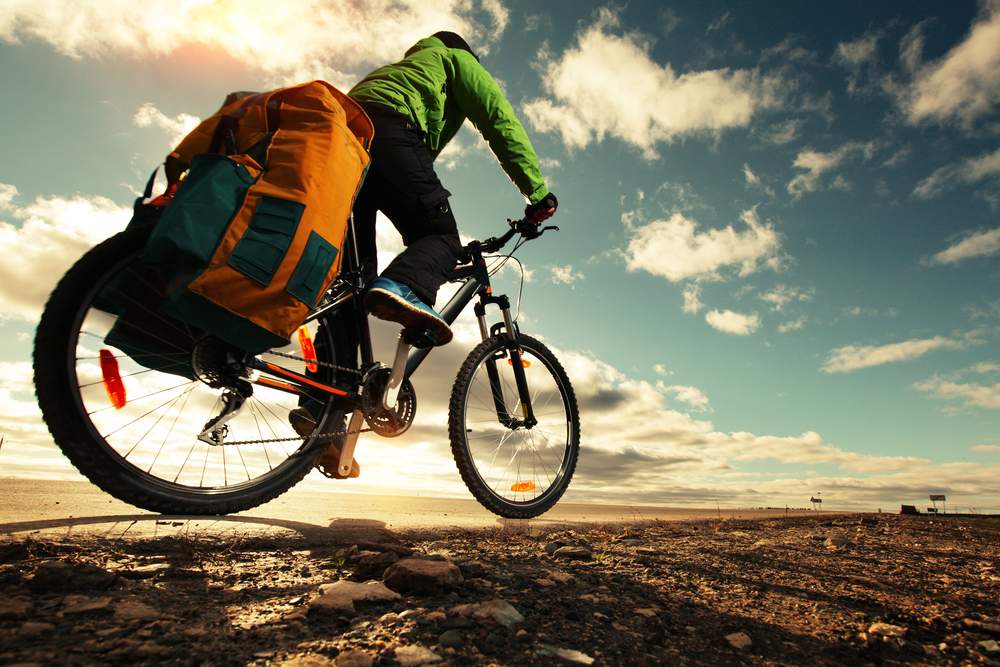
This is often recommended as one of the best ways to save money while traveling, but if you’re stuck in backpacker ghettos with a heavy pack, it can be hard to do. Is it really off the beaten path if there was a brochure for it at the desk in your hostel?
“If freedom from the tyranny-of-the-over-done is what you seek in your travels, then two wheels could be your ticket to ride.”
With your own wheels, the possibilities are endless, and you’ll find things no one else will, from tiny street fests in German villages to deserted pebbled beaches along the Italian Adriatic. You can spend your week in the city at the hostel, but when you get sick of it, you can pedal out of town or work your way out to the laguna that the local buses don’t even reach. If freedom from the tyranny-of-the-over-done is what you seek in your travels, then two wheels could be your ticket to ride.
Read about these 12 Less Visited Countries and Why You Should Go There Now
Reduce Your Carbon Footprint & Outbound Cashflow
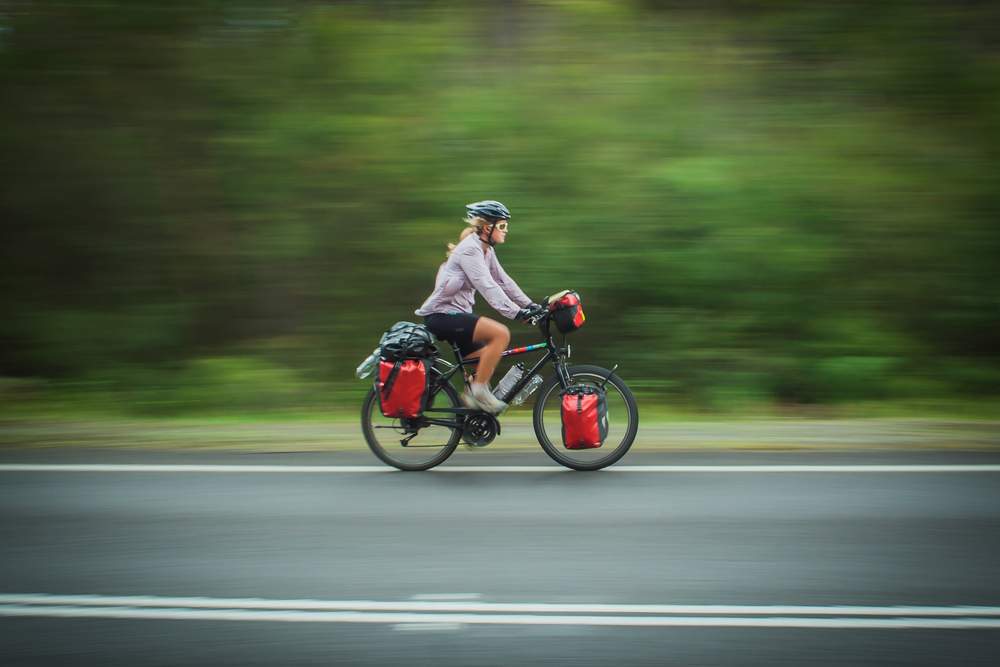
Next to lodging, the most expensive part of travel is the actual transport between destinations. Train travel can be expensive and unreliable in some parts of the world. Buses, of the budget variety, are not always a very scenic way to travel. And when you get off of the bus or train, then what? I love to walk, but I hate to carry heavy bags. That tension that forms between my shoulder blades as a dull ache quickly leads to a headache, and headaches ruin my travel zen.
If you have a bike, there’s never a problem, and very few places you cannot go. You don’t mind heading a mile out of town to check out that really great little posada when you’re rolling, not trudging. You can empty those panniers and go shop at the inexpensive local market instead of being held hostage by the bandits at the local corner store. And you’ll never be taken for a ride by another tuk-tuk or taxi driver again; literally or figuratively.
“Cycling is a very low impact way to travel with no carbon footprint from fossil fuel usage. “
There’s another benefit beyond dollars and cents. Cycling is a very low impact way to travel with no carbon footprint from fossil fuel usage. There is far less industrial impact in the production of a bicycle than an internal combustion vehicle of any sort. There is less metal, less plastic and rubber, less paint, less of all of the things that are slowly killing our planet. Bikes are easy and cheap to fix with parts available worldwide. Cycling is the original eco-tourism. You’ll have the satisfaction of giving back to the planet and building your health in addition to living your dream.
Check out these 12 Budget-Friendly Sustainable Travel Experiences
Meet the Locals
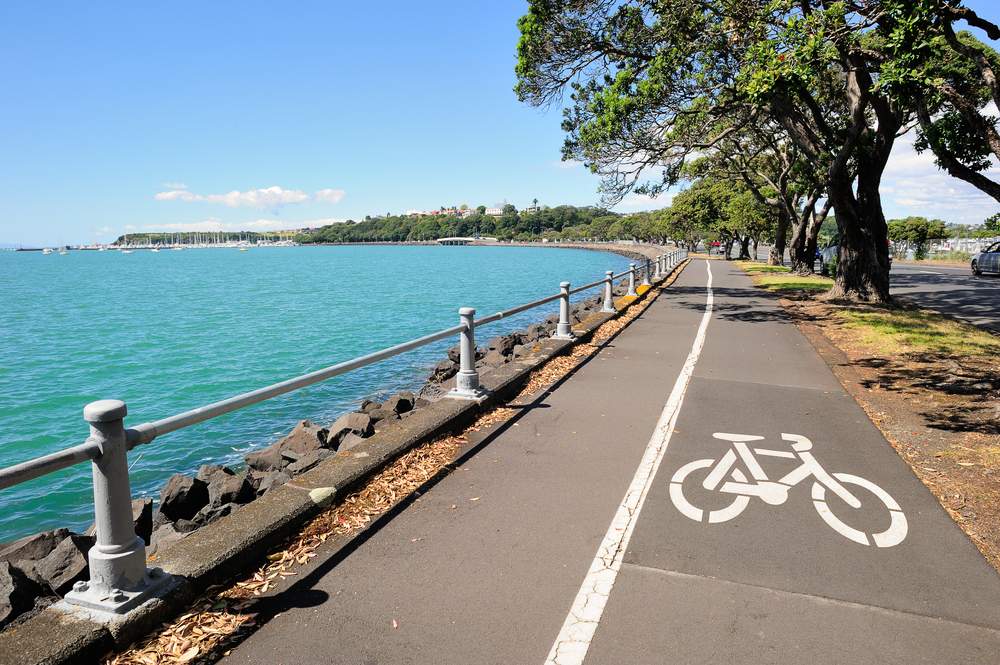
There is much discussion in travel communities about having an
authentic experience. If you’re cycling instead of backpacking in the traditional sense, your odds of getting out of the backpacker ghetto (or never getting there to begin with) increase. So do your odds of interacting daily with local people in untouched places along your route as you move slowly, go about meeting your daily needs for food and lodging, and explore the long roads between destinations.
Travel is so much more than a list of destinations, or at least it can be. The concept of slow travel is gaining momentum as more people shift their emphasis away from where they’re going to where they are in the moment. The journey becomes the destination, where we’re going as important as where we end up. Cycling forces us to slow down, take a look at the scenery, clear the clutter out of our heads, and meditate on the rhythm of the pedals and the songs the road sings as we roll. What could be more authentic than meeting yourself on the road?
Learn how to Plan a Cycling Trip in Europe
Still not convinced? Let me tell you a quick story:
In 2007, we were planning a year in Europe for our family of six with a price tag rapidly approaching $100,000, including RV rental, campground rates, gasoline consumption, and more. That’s just $45 USD per person, per day; well within most people’s definition of “budget travel.” But by changing our plans to cycle instead of drive or train, tenting instead of hosteling, cooking and eating at fresh markets instead of restaurants, we spent an entire year in Europe (one of the most expensive places to travel) and North Africa for a grand total of $30,000 USD for six people. That’s just $14 a day per person, and yes, that included everything, even airfare.
Since that trip we’ve continued the journey, traveling non-stop for over seven years now.
We’ve also road tripped Central America, lived six months in Guatemala (twice), road tripped the USA (with 11 kids under 15 years old for months at a time) camper-vanned New Zealand, adventured Australia, explored the Amazon in Peru and visited all fifty states. Our daily budget is still $17 USD a day per person, and our favorite way to tour is on two wheels!





